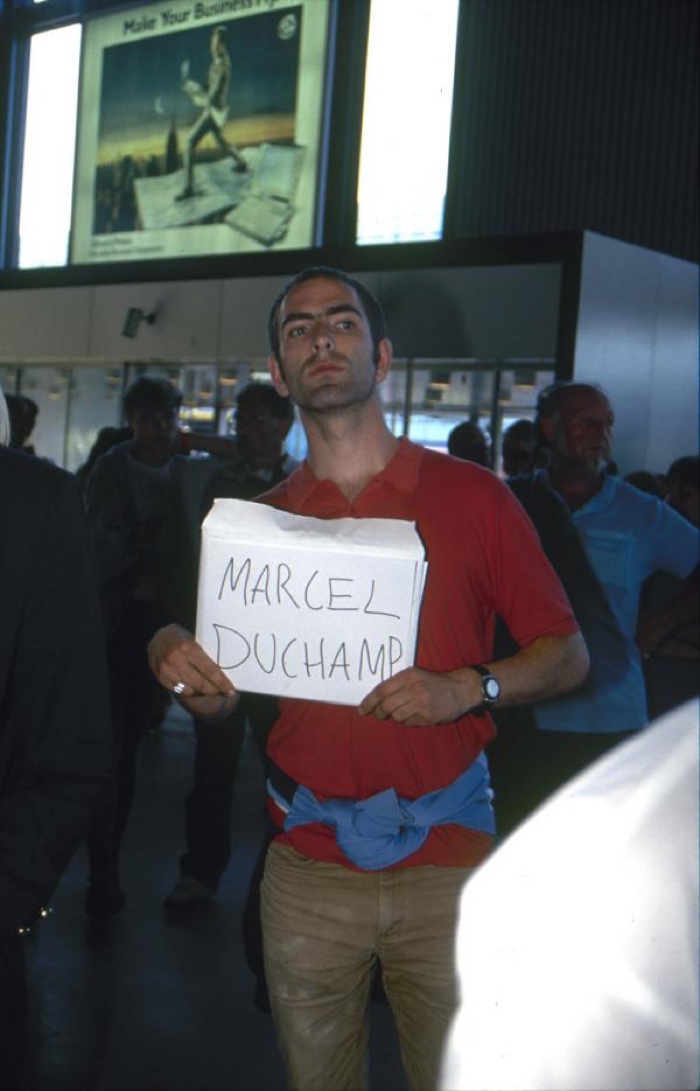
Jonathan Monk, Waiting for Famous People (Marcel Duchamp), 1997. Photo: Galleri Nicolai Wallner
Aéroports / Ville-monde, an exhibition open until 21 May at the Gaîté Lyrique in Paris, invites visitors to look behind the sanitized, codified and paranoid facade of airports and ask themselves whether airports are harbingers of a new order or microcosms of their own.
In an advanced globalized era, the airport is a lab for our contemporary life. It echoes and fixes all the major themes that rhythm life in our societies: mobility and surveillance, immigration and consumption, terrorism and globalized connection. Linked from one another by a uniform protocol, from Marseille to Yellowknife, they might be today the suburbs of an “invisible world capital”, foreseen by the SF writer J.G. Ballard, the tarmac of a global village, the doorstep of an artificial and virtualized world.
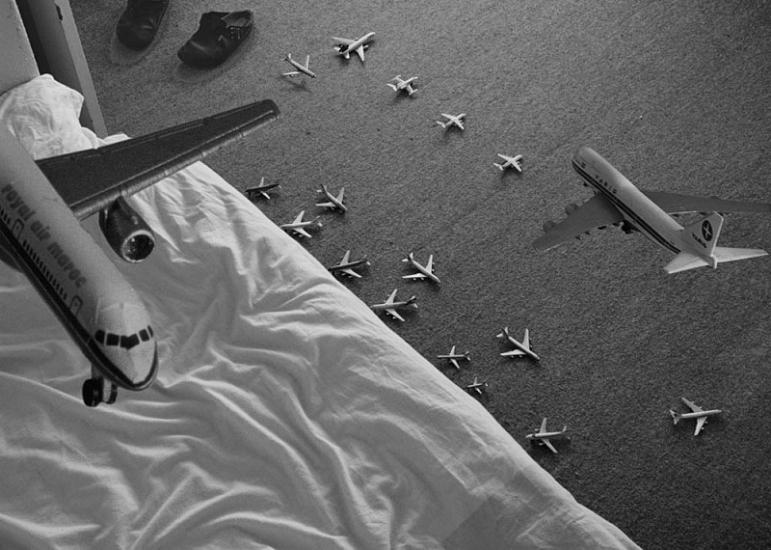
Hiraki Sawa, Dwelling, 2002
The exhibition recreates some of the key moments of your passage through an airport terminal: you get a boarding pass at the entrance, walk through Matthias Gommel‘s queue management system, stop at Marnix de Nijs‘ security portal equipped with a biometric software that will probe your facial features and matches them to famous characters (i tried several times and was ‘recognized’ as an actress of erotic horror movie, thanks!), etc.
The exhibition is entertaining without ever verging on the funfair. It has depth, insights and the ambition to make us see airports as more than icons of non-places and glorified shopping mails. Airports are symbols of globalization, territories of hyper-controlled behaviour, gateways to movement, etc. And as recent events in the U.S.A. have demonstrated, they’ve also become spaces for civic expression. When Trump’s travel ban blocked entry of migrants from 7 Muslim countries, including green card holders, people flocked to airports with signs and messages of solidarity to demonstrate their opposition to the policy.
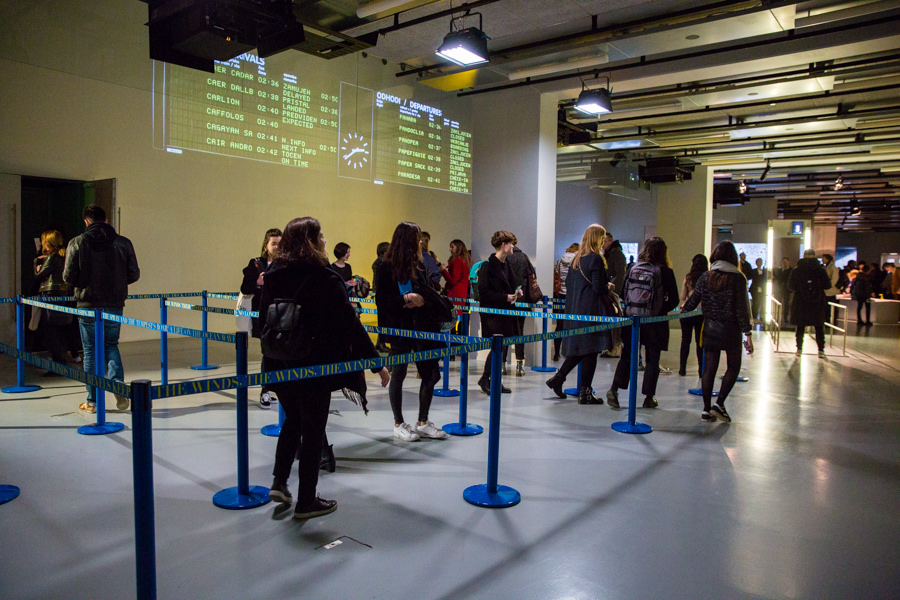
Matthias Gommel, Untitled (Passage), 2011. Aéroports, Ville-Monde, exposition à la Gaîté Lyrique du 23 février au 21 mai 2017. Photo: © vinciane lebrun-verguethen/voyez-vous
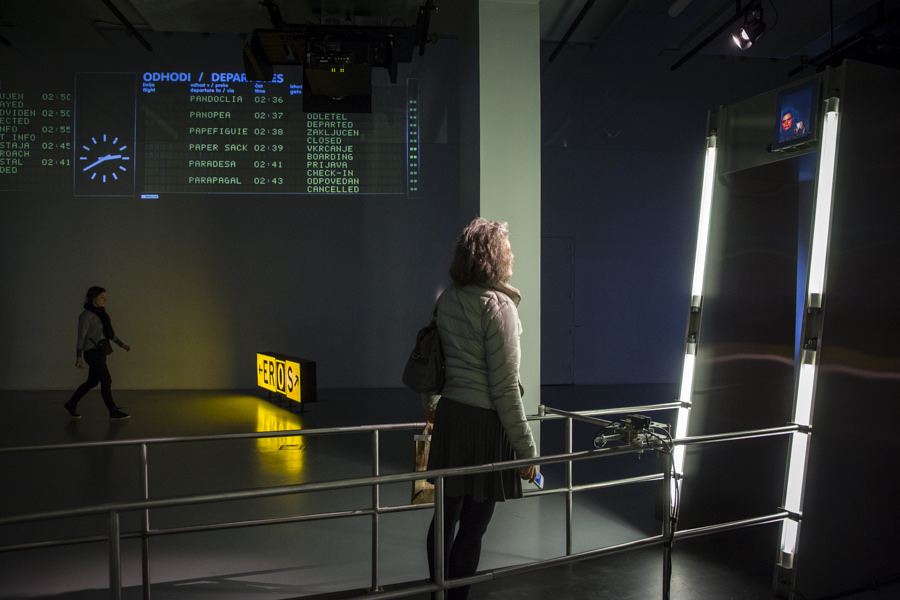
Marnix de Nijs, Physiognomic Scrutinizer, 2008-2009. Aéroports, Ville-Monde, exposition à la Gaîté Lyrique du 23 février au 21 mai 2017. Photo: © vinciane lebrun-verguethen/voyez-vous
Aéroports / Ville-monde is designed like a temporary airport terminal that gets more intriguing and troubling as you move from one artwork to another. Here’s a very quick walk through some of the works i found particularly interesting in the exhibition:
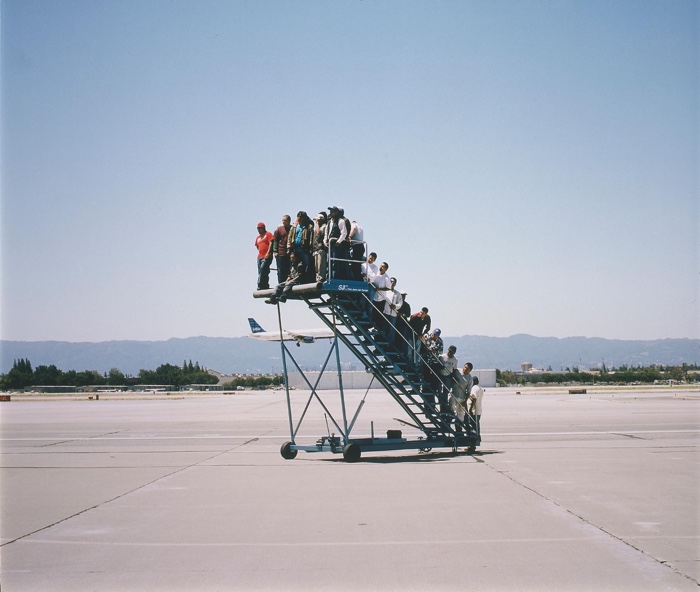
Adrian Paci, Centro di Permanenza Temporeana, 2007. Photo via artslife
Adrian Paci, Centro di Permanenza Temporeana, 2007
Adrian Paci’s work highlights the repercussions of conflicts, social revolutions and soon i’m sure the effects of climate change that will transform many of us into environmental migrants. In our capitalistic society, goods are free to travel, human bodies are not if they don’t have the ‘right’ documents. The video Centro di Permanenza Temporeana (Center of Temporary Permanence) shows people stepping onto boarding stairs. Once they’ve reached the top, there is no cabin for them to enter. The planes slowly pass behind them and these people remain standing with dignity on the pitiful platform, excluded from the economy of movements and from the promise of a better future in another country.
Paci’s exploration of migration issues echo his own experience. In 1997, the artist had to leave Albania with his wife and two daughters and settled in Milan. At the time, his country was in a state of crisis and protests bordering on civil war.
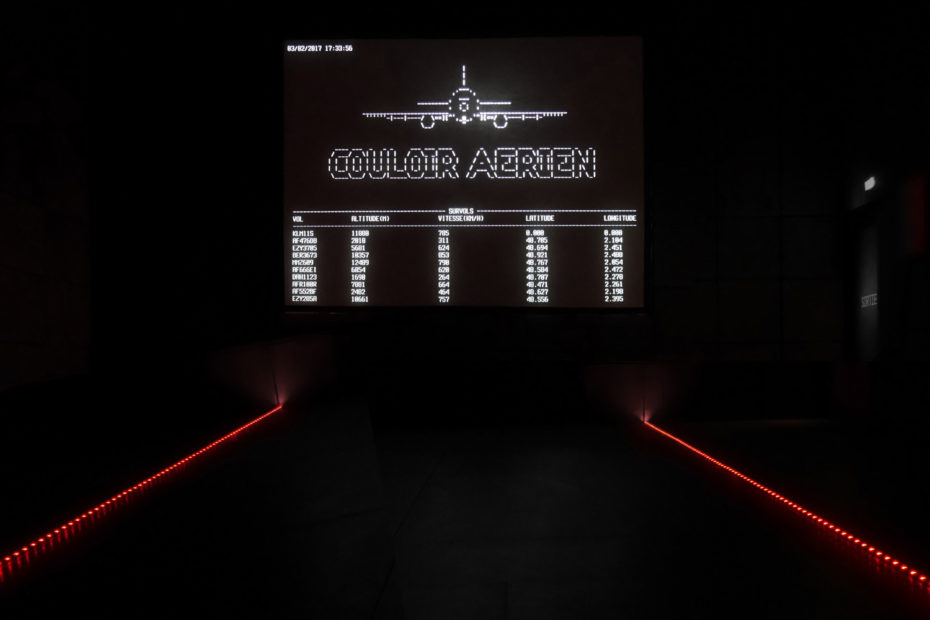
Cécile Babiole, Couloir Aérien, 2016. Couloir Aérien, 2016. Installation view at La Gaîté yrique
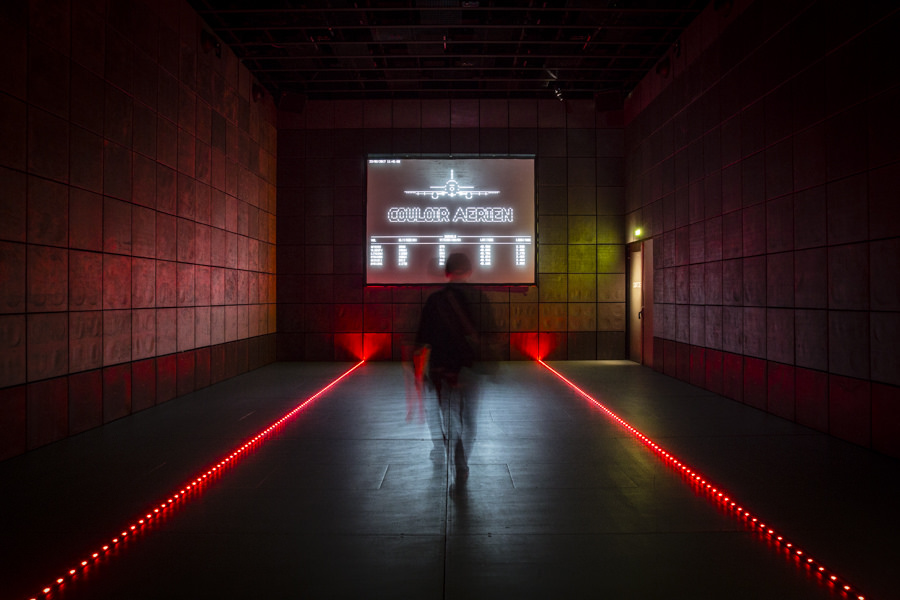
Cécile Babiole, Couloir Aérien, 2016. Aéroports, Ville-Monde, exposition à la Gaîté Lyrique du 23 février au 21 mai 2017. Photo: © vinciane lebrun-verguethen/voyez-vous
Cécile Babiole’s installation Couloir Aérien makes loud and intrusive the civilian air traffic flying over and around the building of the Gaîté Lyrique. The system detects the ADS-B (Automatic dependent surveillance-broadcast) signals emitted by aircraft and amplifies them. Sounds of otherwise unnoticed flyovers suddenly invade the space according, while a video screen visualizes the source of these otherwise unnoticed sounds: flight name, altitude, latitude, longitude, speed.
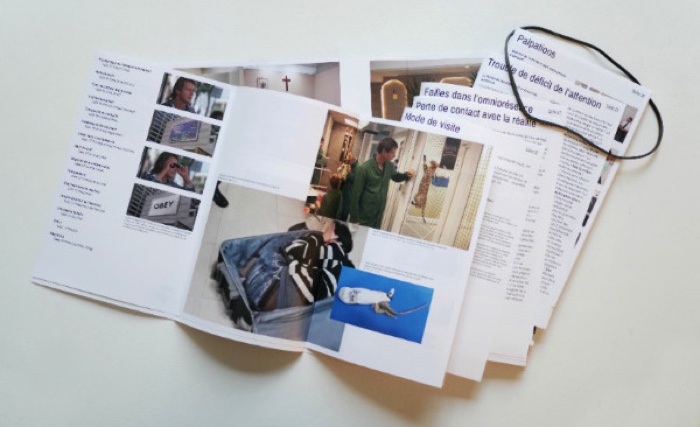
Stéphane Degoutin and Gwenola Wagon, Psychoanalysis of the International Airport – Museum of Terrorism
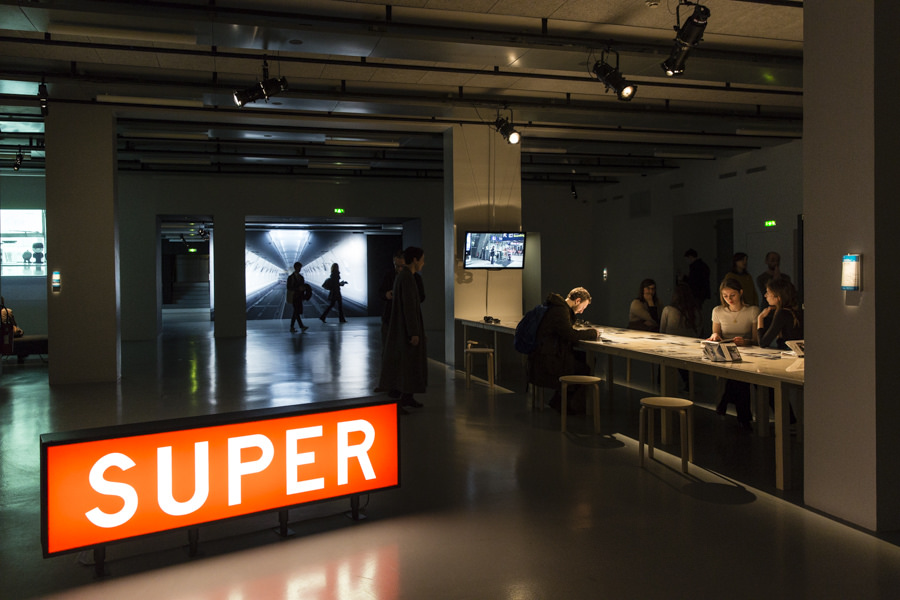
Stéphane Degoutin and Gwenola Wagon, Psychoanalysis of the International Airport – Museum of Terrorism. Aéroports, Ville-Monde, exposition à la Gaîté Lyrique du 23 février au 21 mai 2017. Photo: © vinciane lebrun-verguethen/voyez-vous
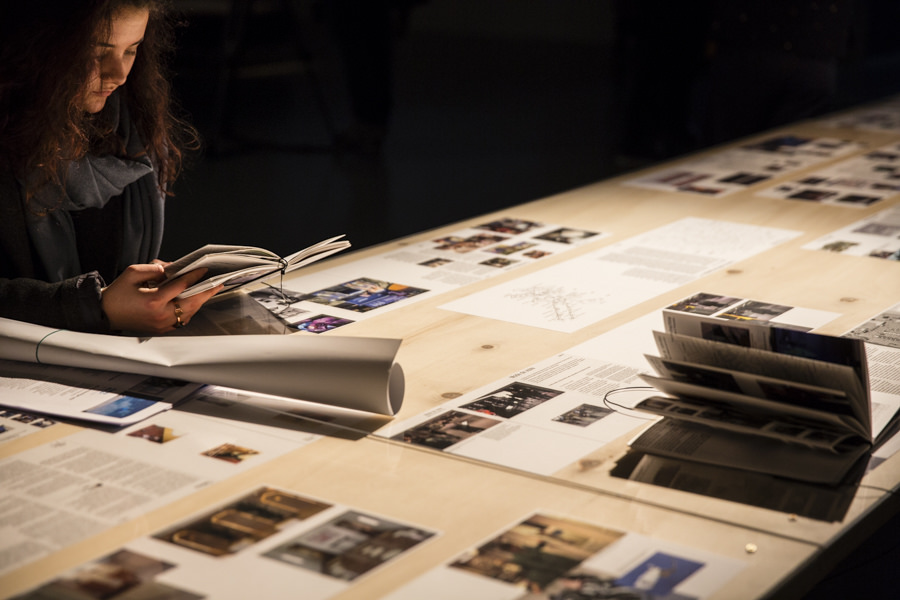
Stéphane Degoutin and Gwenola Wagon, Psychoanalysis of the International Airport – Museum of Terrorism. Aéroports, Ville-Monde, exposition à la Gaîté Lyrique du 23 février au 21 mai 2017. Photo: © vinciane lebrun-verguethen/voyez-vous
Artists and researchers, Stéphane Degoutin and Gwenola Wagon present the airport as a museum of terrorism, a place characterized by the coexistence of the fantasy of the disaster, of the absolute surveillance, of the omnipresence, of unlimited shopping.
The installation Psychoanalysis of the International Airport – Museum of Terrorism at the Gaîté takes the form of a long table where people sit down and read the booklet Psychanalyse de l’aéroport international in which Degoutin and Wagon have compiled evidences that airports operate as space where bodies made transparent are shifted through ‘autistic architecture’, where threat is over-dramatized and surveillance is becoming increasingly arbitrary.
The book manages to be both hilarious and thought-provoking. Every single visitor who sits down to briefly browse through it ends up being glued to their chair.
Discovered in the book (sorry i couldn’t resist):
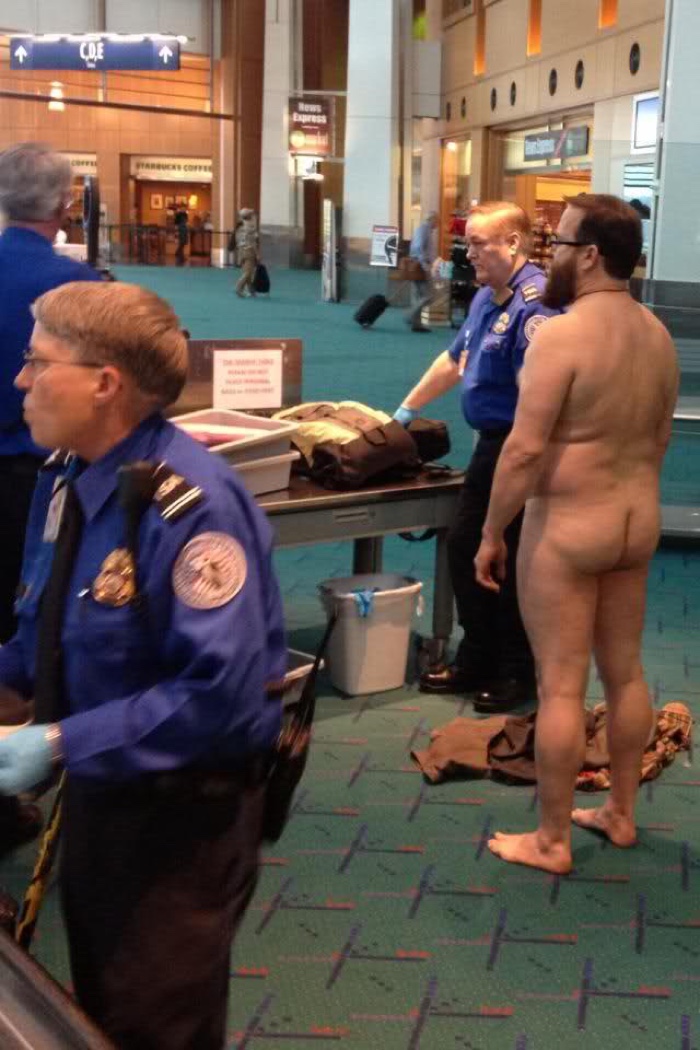
In 2012, John E. Brennan got naked while going through a checkpoint at Portland airport as a protest against invasive Transportation Security Administration procedures, such as body scans and pat downs
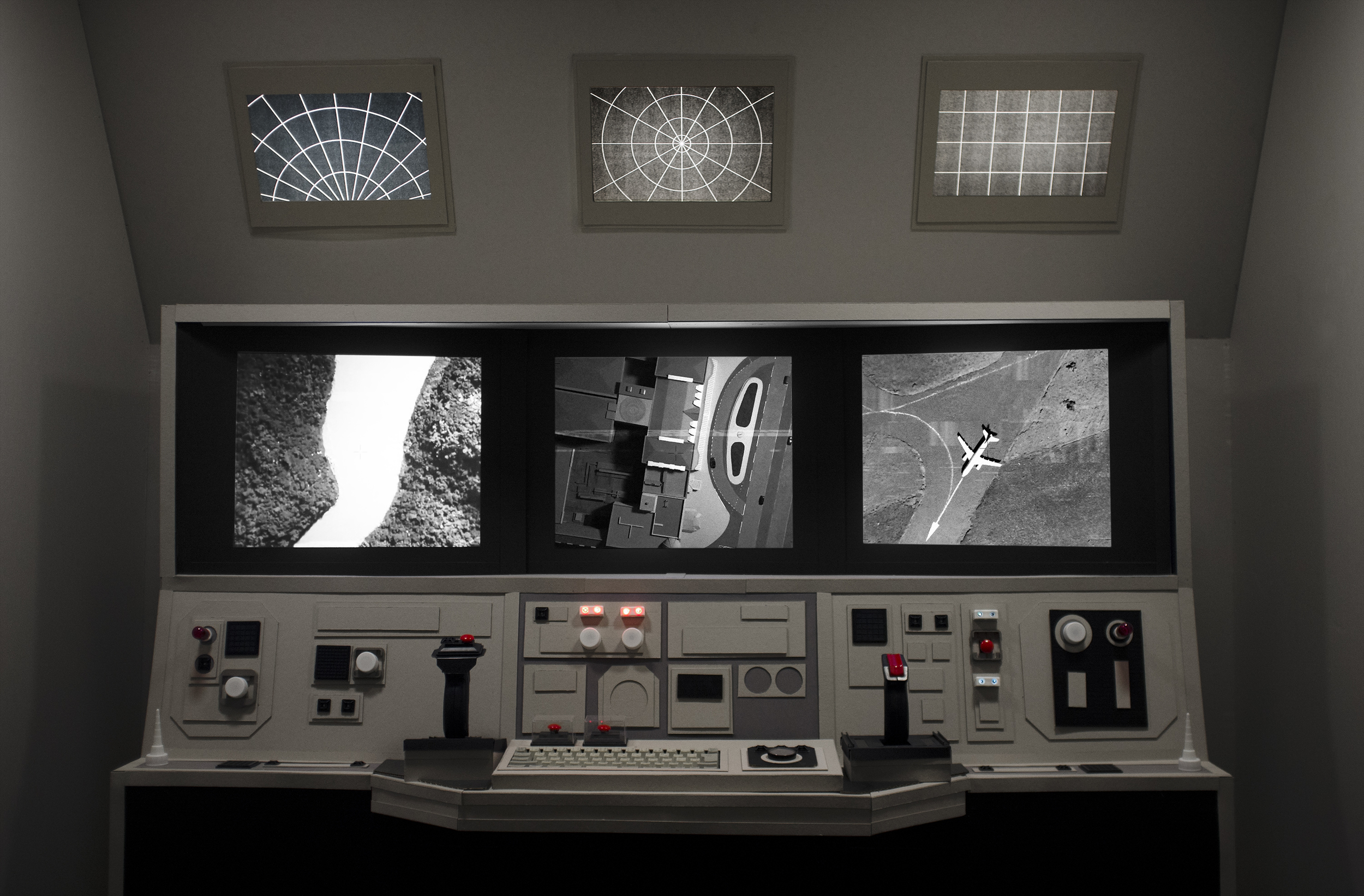
Joseph Popper, The Same Face (installation detail), 2015
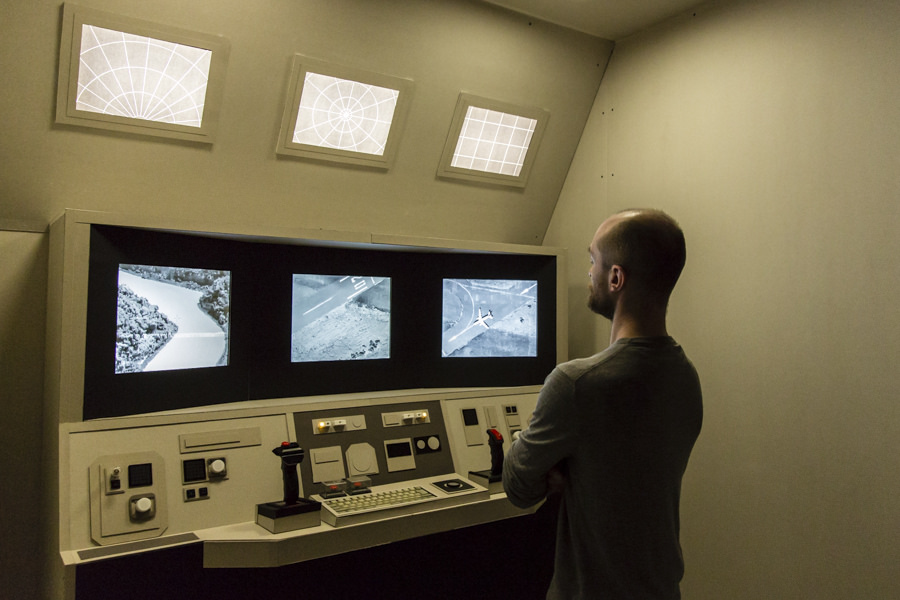
Aéroports, Ville-Monde, exposition à la Gaîté Lyrique du 23 février au 21 mai 2017. Photo: © vinciane lebrun-verguethen/voyez-vous
The Same Face plays on the similarities between flight simulation video games and drone command centers. Both exploit digital technologies but only pilots of drone control rooms can wreak havoc and kill real human beings at a distance. The work takes the bombing of Brighton’s Grand Hotel by the IRA in 1984 as a point of departure, where the location of the event is one of a series of landscapes reimagined from 5000ft high.
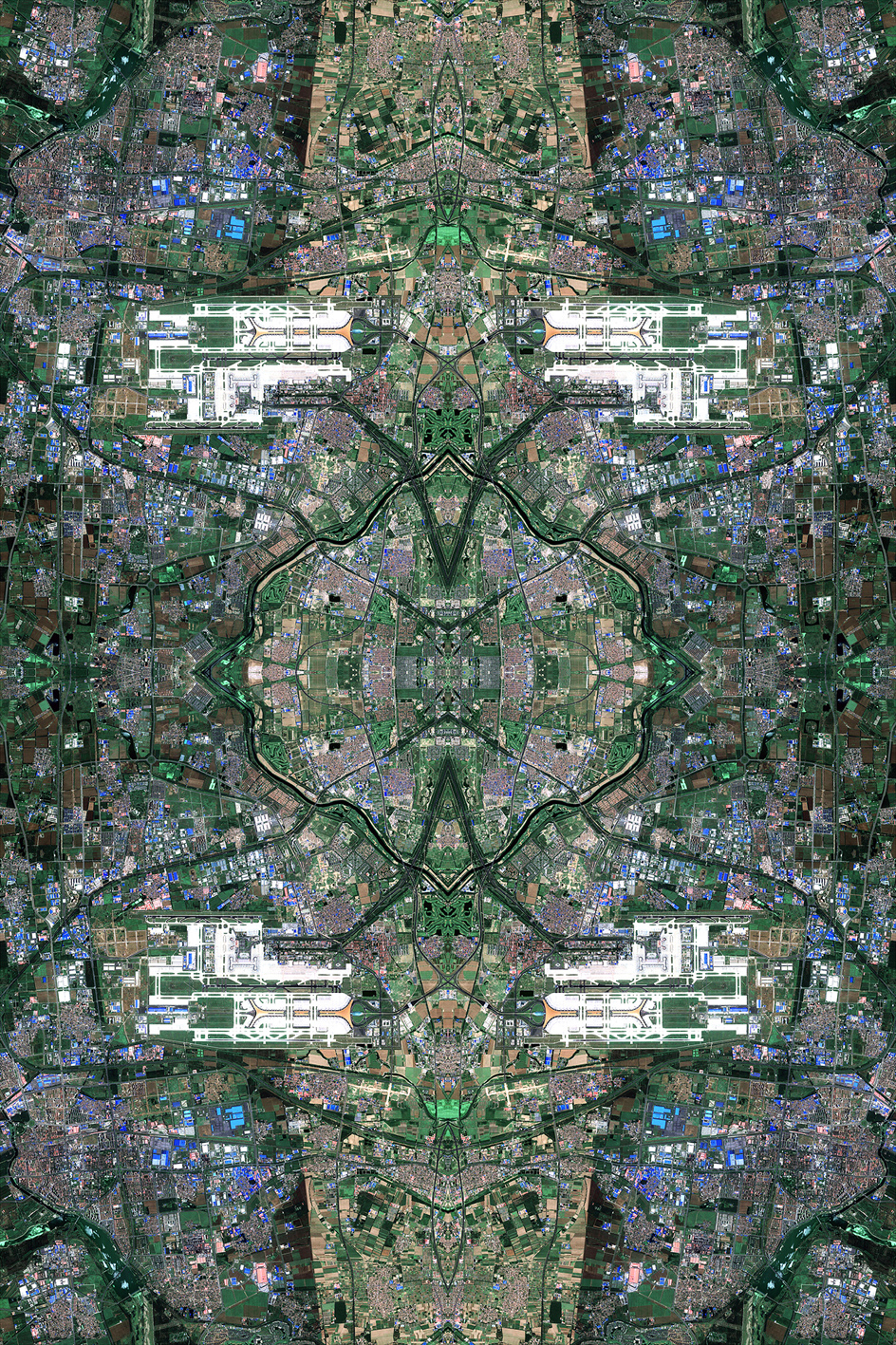
David Thomas Smith, Anthropocene Series, 2006 (Beijing International Airport, Beijing, People’s Republic of China)
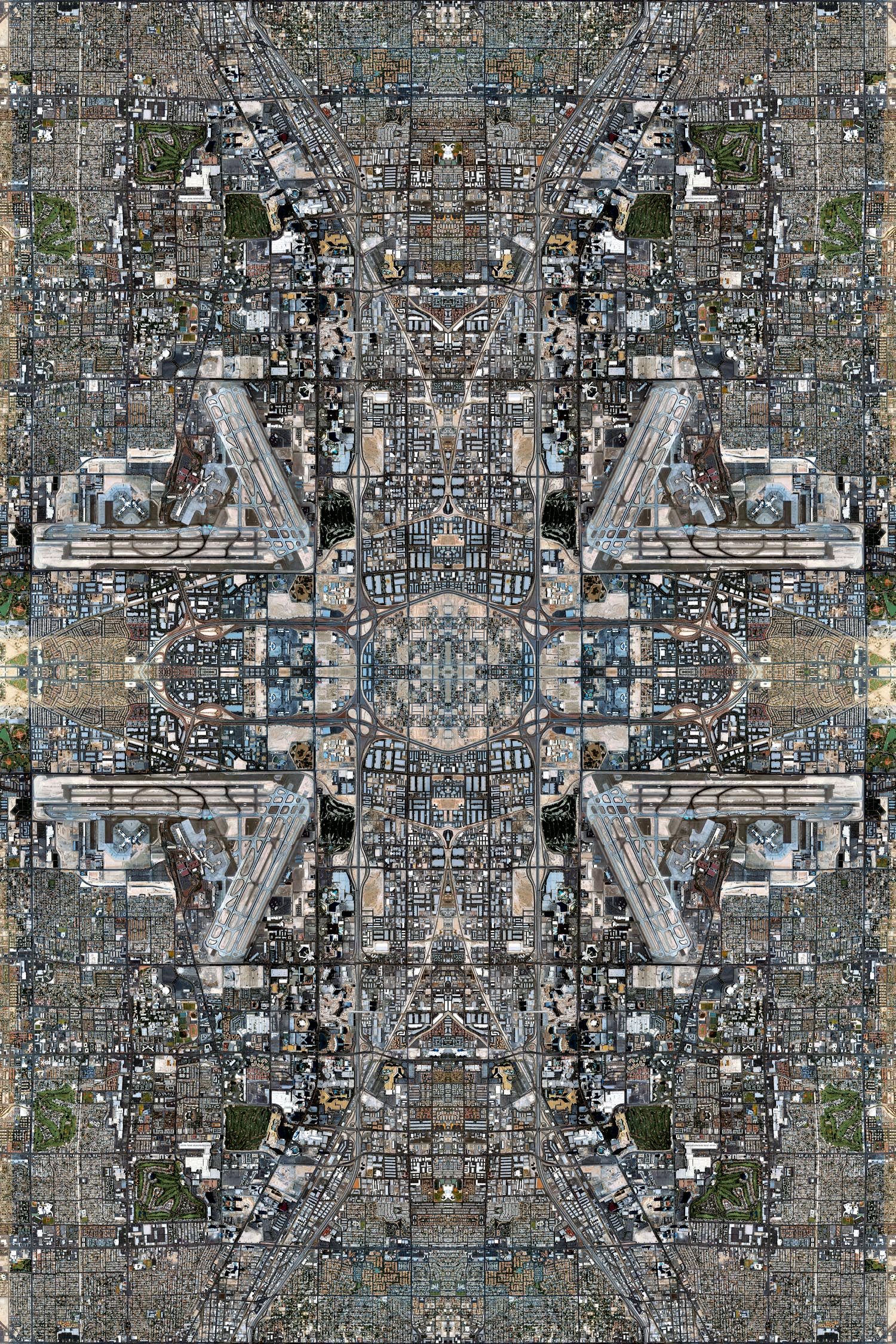
David Thomas Smith, Anthropocene Series, 2006 (Las Vegas, NV, United States of America)
David Thomas Smith takes screenshots of Google Earth aerial images and organizes them into complex tapestries that visualize the elaborated structures of global capitalism’s centers. “I would like people to come away with a sense of the scale on which the world operates,” the artist explained in an interview with Canadian Geographic. “The power that mankind has at its finger tips, and then, hopefully, they may begin to question how that power is used.”
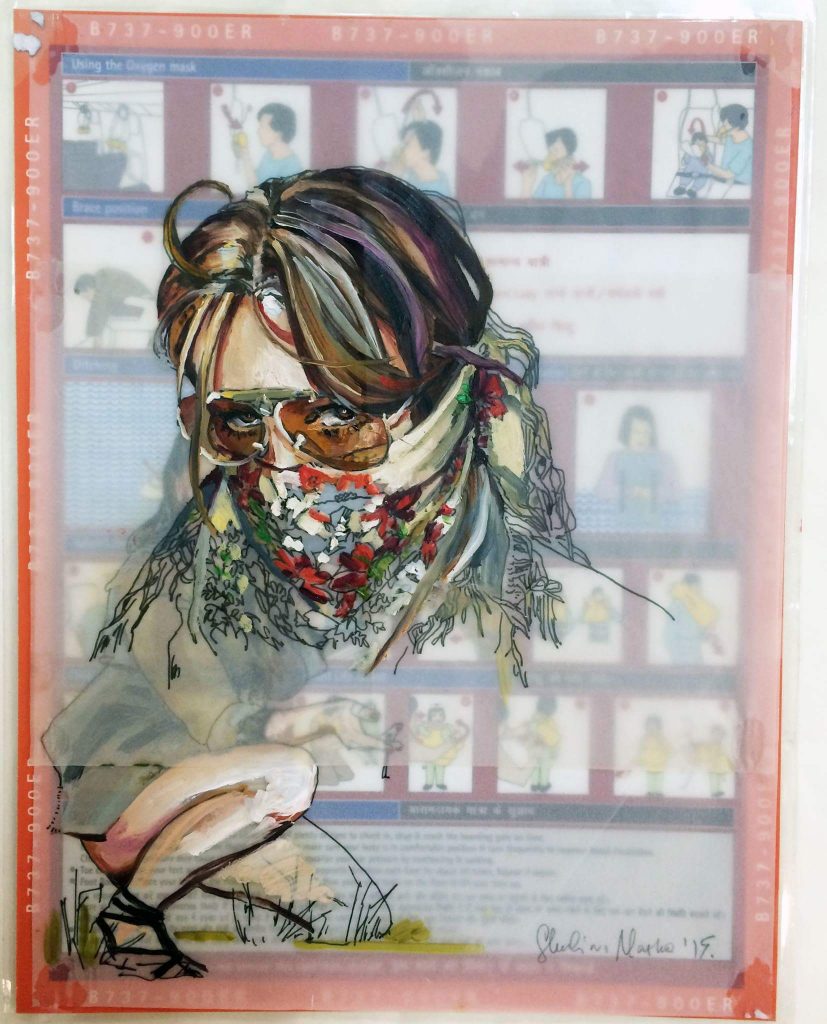
Masha Shubina, Lost and Found series, 2016
Masha Shubina’s self-portraits are printed on aircraft security cards. She’s defiant, hiding her face behind a balaclava or a traditional Ukrainian scarf, brandishing a Molotov cocktail and displaying behaviours that could get her arrested. Especially in an airport.
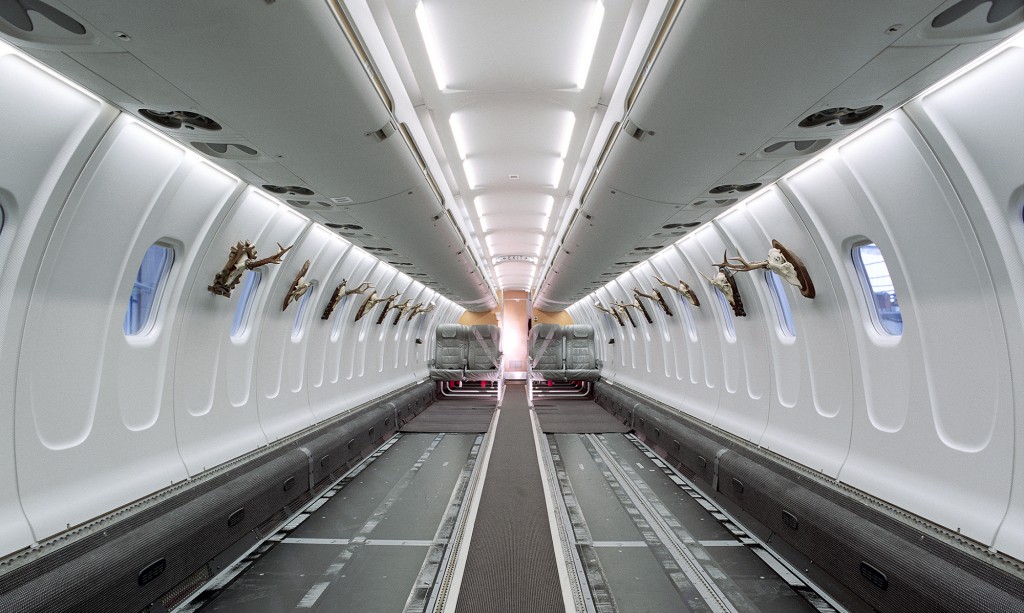
Jasmina Cibic, JC01 – Lufthansa, 2006
JC01-Lufthansa is part of a series of photographs representing the inside of the cabin of an aircraft that was under repaired at the Ljubljana airport in Slovenia. The artist took advantage of the fact that the planes were immobilized and emptied and she decorated them with hunting trophies collected by a Yugoslavian general. Two worlds collide in this image, Western Europe’s capitalist vision and the rugged terrain of Yugoslavian history.
More images from the show:
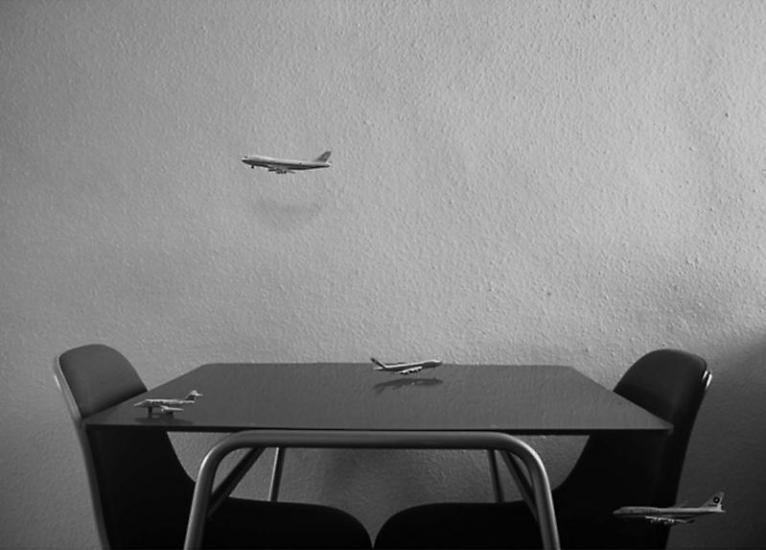
Hiraki Sawa, Dwelling, 2002
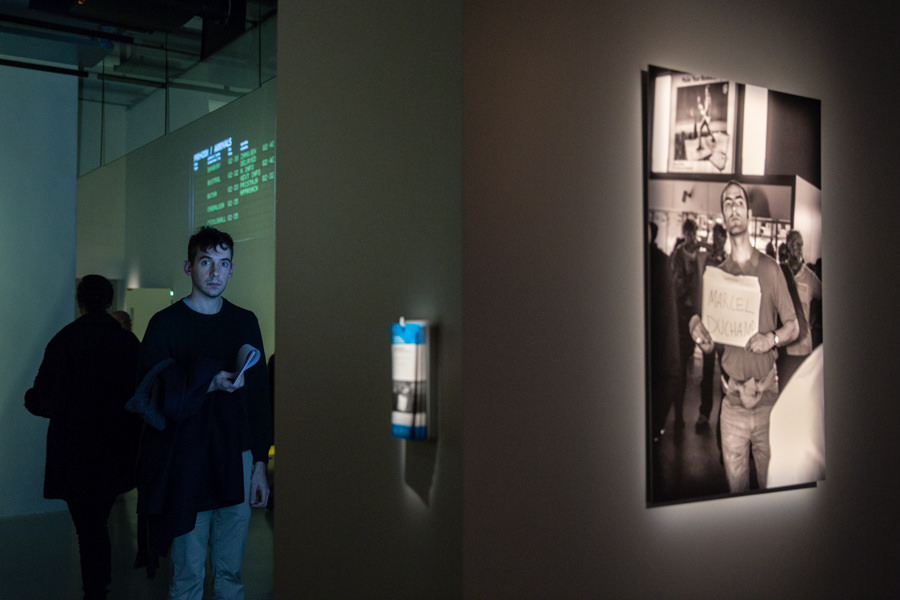
Aéroports, Ville-Monde, exposition à la Gaîté Lyrique du 23 février au 21 mai 2017. Photo: © vinciane lebrun-verguethen/voyez-vous
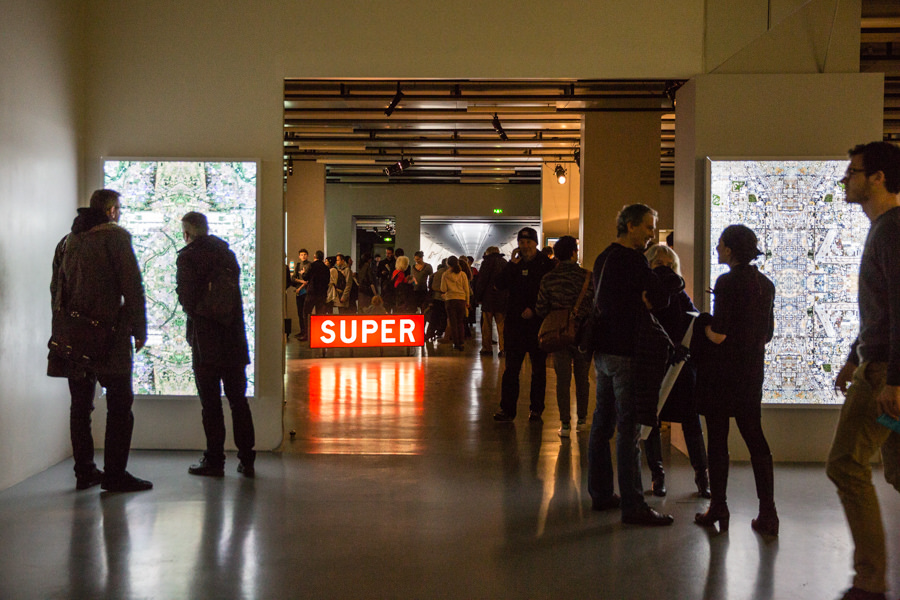
Aéroports, Ville-Monde, exposition à la Gaîté Lyrique du 23 février au 21 mai 2017. Photo: © vinciane lebrun-verguethen/voyez-vous
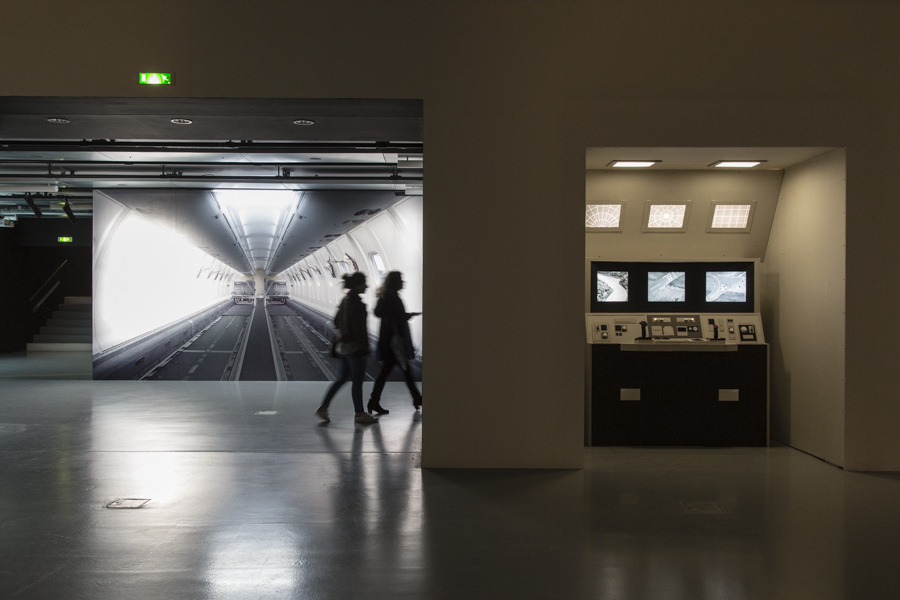
Aéroports, Ville-Monde, exposition à la Gaîté Lyrique du 23 février au 21 mai 2017. Photo: © vinciane lebrun-verguethen/voyez-vous
Aéroports / Ville-monde is at the Gaîté Lyrique in Paris until 21 May 2017
